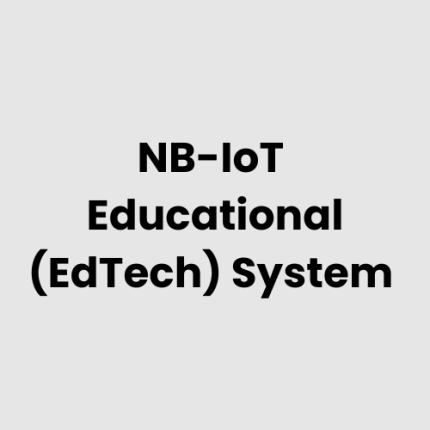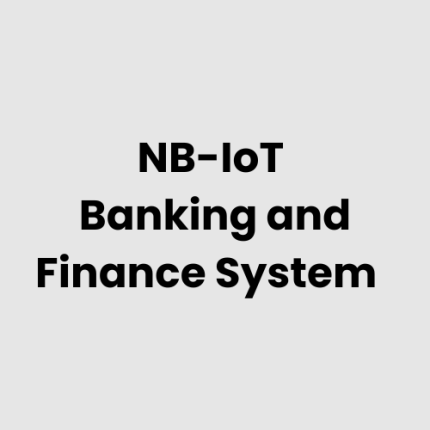Description
Technical Architecture
The NB-IoT Enabled Environmental Compliance Monitoring System comprises three primary layers:
- Sensor Layer:
- Includes NB-IoT sensors for air quality, water quality, noise levels, and temperature.
- Collects granular, real-time data from various environmental parameters.
- Communication Layer:
- NB-IoT gateways transmit data securely to the cloud or a local server using low-power wide-area network (LPWAN) protocols.
- Multi-protocol support (MQTT, HTTPS) ensures seamless data integration.
- Application Layer:
- A centralized dashboard displays analytics, compliance status, and real-time alerts.
- Customizable reporting tools for regulatory documentation.
Hardware List
- Environmental Sensors:
- Air quality sensors (CO2, PM2.5, NOx).
- Water quality probes (pH, turbidity, dissolved oxygen).
- Noise level meters.
- Temperature and humidity monitors.
- NB-IoT Gateways:
- Multi-channel communication capabilities.
- POE or solar power options.
- Edge Devices:
- Microcontrollers with data preprocessing.
- Power Solutions:
- Battery packs with energy harvesting features.
- Server Infrastructure:
- Local data storage units with backup.
Physical Placement Considerations
- Air Quality Sensors:
- Positioned at critical pollution sources and community zones.
- Elevated placement to avoid ground-level obstructions.
- Water Quality Probes:
- Deployed in strategic water bodies, pipelines, and industrial effluents.
- Submersible housings for durability.
- Noise Level Meters:
- Installed near industrial zones and high-traffic areas.
- Mounted away from reflective surfaces to prevent acoustic distortion.
- Gateways:
- Centrally placed for optimal signal coverage.
- Protected by weatherproof enclosures in outdoor settings.
Hardware Architecture
- Centralized Processing Unit:
- Handles data aggregation from multiple sensors.
- Redundancy Systems:
- Backup gateways and sensors ensure uninterrupted monitoring.
- Integrated Power Management:
- Solar panels with battery backup for critical sensors.
Deployment Considerations
- Regulatory Compliance:
- Adherence to local environmental standards.
- Alignment with international sustainability protocols.
- Scalability:
- Modular design to add sensors or expand coverage.
- Security:
- End-to-end encryption for data integrity.
- Training:
- GAO Tek offers on-site or remote training for optimal system operation.
Relevant Industry Standards and Regulations
- EPA Standards
- ISO 14001
- EN 61000
- IEC 61400
- ASTM E2149
- ANSI/ASHRAE Standards
- FCC Compliance
Local Server Version
For localized deployment, the system includes:
- A server for on-premises data storage and processing.
- Offline dashboards for real-time monitoring.
- Manual data synchronization with external systems when required.
Cloud Integration and Data Management
- Cloud Platform Integration:
- Compatibility with AWS IoT Core, Microsoft Azure IoT Hub, and Google Cloud IoT.
- Real-time synchronization for data analysis and compliance tracking.
- Data Analytics:
- AI-driven insights for predicting environmental trends.
- Reporting Tools:
- Pre-configured templates for regulatory compliance submissions.
GAO Case Studies of NB-IoT Enabled Environmental Compliance Monitoring System
USA Case Studies
- San Francisco, California
An NB-IoT monitoring system tracks air quality near industrial areas, identifying trends in particulate matter and ensuring compliance with environmental regulations. The system provides real-time alerts to city officials for immediate action. - Houston, Texas
Deployed across major oil refineries, this system monitors air and water emissions, ensuring compliance with EPA regulations. It enables the tracking of volatile organic compounds (VOCs) in near-real time. - Chicago, Illinois
An NB-IoT network monitors water quality in the city’s river systems, providing comprehensive data on turbidity, pH, and dissolved oxygen to aid in urban water management initiatives aligned with Clean Water Act standards. - Denver, Colorado
The system measures air quality in high-altitude urban zones, focusing on carbon dioxide and nitrogen oxide levels. The data supports efforts to maintain compliance with the EPA’s Clean Air Act. - Miami, Florida
Deployed to monitor coastal water quality, the system tracks salinity and contamination levels to protect marine life and ensure compliance with NOAA marine guidelines. - Seattle, Washington
This project uses NB-IoT devices to monitor industrial noise levels in residential zones, ensuring compliance with city ordinances on sound pollution standards. - Atlanta, Georgia
Installed in heavy traffic zones, the system measures vehicular emissions, providing actionable insights to the city’s transportation and environmental agencies under the National Ambient Air Quality Standards (NAAQS). - New York City, New York
A large-scale system monitors air quality around construction sites, ensuring compliance with New York State DEC standards. - Los Angeles, California
The system tracks air pollutants in areas with heavy port activity, offering real-time data to mitigate environmental impact and meet federal compliance standards. - Phoenix, Arizona
Monitoring water quality in reservoirs, this project helps ensure safe drinking water supply by tracking bacterial contamination and pH levels, adhering to the Safe Drinking Water Act. - Boston, Massachusetts
A citywide deployment tracks noise pollution from industrial and construction activities, providing real-time alerts when thresholds are breached according to state regulations. - Dallas, Texas
The system ensures that industrial facilities maintain compliance with wastewater discharge standards by monitoring pollutants and turbidity in local water bodies under the Texas Commission on Environmental Quality. - Las Vegas, Nevada
Deployed at solar farms, the system monitors air quality and temperature fluctuations, helping maintain compliance with DOE energy-sector guidelines. - Portland, Oregon
This initiative focuses on ensuring compliance with forestry-related environmental standards by monitoring soil moisture and air quality in alignment with Forest Practices Act. - Philadelphia, Pennsylvania
Installed in urban green spaces, the system monitors air quality to support citywide sustainability initiatives and improve public health outcomes under the Clean Air Act.
Case Studies in Canada
- Toronto, Ontario
The system monitors air quality near densely populated downtown areas, offering granular data on particulate matter and carbon monoxide to ensure adherence to Canadian Air Quality Standards. - Vancouver, British Columbia
Deployed to monitor coastal water bodies, the system tracks pH levels, temperature, and salinity, ensuring compliance with local marine environmental protection regulations outlined by Environment and Climate Change Canada.
Navigation Menu for NB-IoT
Navigation Menu for IoT
- LORAWAN
- Wi-Fi HaLow
- Z-WAVE
- BLE & RFID
- NB-IOT
- CELLULAR IOT
- GPS IOT
- IOT SENSORS
- EDGE COMPUTING
- IOT SYSTEMS
Our products are in stock and can be shipped anywhere in the continental U.S. or Canada from our local warehouse. For any further information, please fill out this form or email us.
We are actively looking for partners who are like us located in the U.S. and Canada. For more information on partnering with GAO, please visit Partner with GAO Tek Inc. It lists various ways to partner with GAO, such as OEM Partnerships, Technology Integration, Distribution and Reselling Opportunities, Presenting at the Leading Event Tek Summit, Joint R&D Projects, Training and Consulting Services, Industry-Specific Collaborations, Research and Academic Partnerships.



